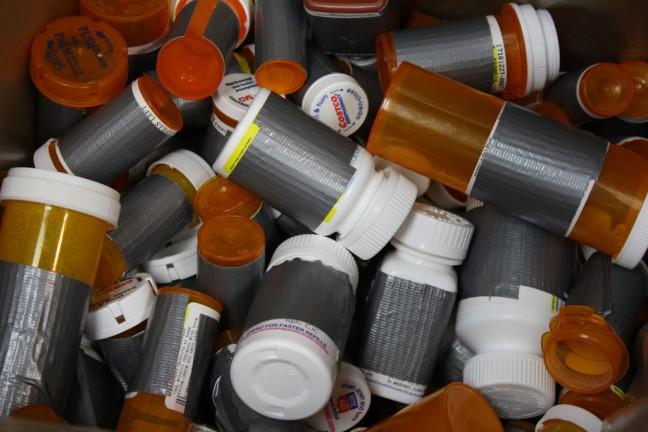In the past decade, drug overdoses have been on the rise in Wisconsin due to a higher prevalence and easy access to powerful drugs.
A Wisconsin Department of Health Services report from September 2016 documented that drug overdose deaths have increased 70 percent in Wisconsin since 2005, with 872 people dead from drug overdoses in 2015. In Dane County alone, 80 people died of overdose in 2015.
The report found that 39 percent of overdoses were caused by unknown drugs, 20 percent caused by prescription opioids, and 16 percent caused by heroin. Other drugs that may have caused overdoses include cocaine, Xanax, Adderall and Ritalin.
Lieutenant Jason Freedman of the Dane County Narcotics Task Force said over prescription of legal opioids like OxyContin and other pain medicines have lead to unintended consequences for users. Those exposed to these powerful drugs can become addicted and cause users to continue using drugs beyond the doctor’s prescription.
Legal opioids are often over prescribed and illegal opioids are often easily accessed, causing them to be abused at a higher rate than other drugs, Freedman said. Opioids are also in every drug store and doctor’s office across Wisconsin, and with this availability it is much more likely that people will become dependent.
“We have a culture that is very focused on pills or quick solutions,” Freedman said. “The triggering event [of the problem] is the over prescription of opiates.”
Kris Murphy, director of development at Wisconsin United We CAN, said it is hard to point to a specific reason for the increase, but these drugs are more prevalent than before. Addiction to dangerous drugs can happen to anyone regardless of demographic.
Anyone can be prescribed a legal drug and end up addicted to that drug, especially if the person is predisposed to addiction, Murphy said. Today, if the patient’s prescription runs out and the person is addicted it is easy for them to find relief in illegal drugs like heroin.
For the past decade, these illegal substances have become more available, Murphy said. Through personal research, Murphy has talked to high school students who say it is easier to get heroin than it is to get alcohol. Since people have such easy access, they don’t understand the physical costs of using these drugs.
“I think often times people, kids run into it and they don’t realize that one bad decision can affect the rest of their lives,” Murphy said.
It’s ‘our’ problem: The growing heroin epidemic across Wisconsin
Murphy said this increase in availability can be linked to high profits that drug dealers can make from dangerous drugs like opioids and heroin. The price of illegal drugs can increase when taken from large urban areas like Chicago to cities and towns in Wisconsin.
High profitability in selling illegal drugs has created a supply chain throughout the midwest, Freedman said. This supply chain starts outside of the United States and is dispersed throughout the country.
Almost all heroin from North America originated in South America, Freedman said. An increased demand in the states creates a larger market to bring more drugs north. These drugs are transported to large urban centers like Chicago and distributed from there.
Increased demand has also encouraged the development of synthetic drugs, Freedman said. Drugs that can be made cheaply in laboratories have the potential to be much more powerful then organic versions. Synthetic drugs like Fentanyl can be combined with heroin to create a more powerful drug.
Fentanyl is 50 to 100 times more potent then morphine, another opioid, and can be lethal in very small doses.
Murphy said when people use these potent drugs it is harder to treat them if they overdose. Naloxone, a drug that treats opioid overdose in an emergency situation, is able to save people who have overdosed, but with the introduction of more potent drugs naloxone may not be enough, Murphy said.
Freedman said to combat this issue there needs to be substantial federal and state resources.
Improvements in drug use prevention and education have caused the number of new addicts to drop, Freedman said. Doctors are controlling the amount of potentially dangerous drugs that are being prescribed to patients. This will decrease exposure to dangerous prescription drugs and help decrease abuse in the long run.
The largest anti-drug effort is to break the cycle of demand, Freedman said. Law enforcement policy makers and others have been involved in working with people who are suffering an addiction to get them the treatment they need.
“People need to demand it of their politicians and leaders that we take this on very strongly,” Freedman said.

















